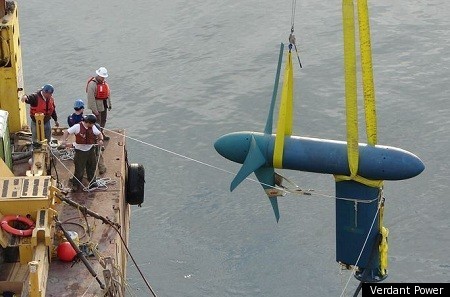Researchers at the Sandia National Laboratories see marine-based power generation – which they call MHK, for marine hydrokinetics – about where wind power was a couple of generations ago. But that’s not all bad. They say the knowledge they gained in developing wind as a renewable-energy resource should help them move faster on marine power.
“The current MHK industry looks a lot like wind did 30 years ago,” said Daniel Laird, manager of the Water Power Technologies Department at Sandia. “We want to take what we’ve learned to compress the MHK development from the 30 years it took wind energy down to 10 years.”

To make that happen, the Sandia scientists have been analyzing the computer-simulated performance of a tidal turbine, a river turbine and a wave-point absorber (a device that bobs on the surface to capture energy from waves). Eventually, the researchers will analyze perhaps 10 devices, with the aim of helping companies and the U.S. Department of Energy figure out where to put their dollars in the marine-power sector.
The Sandia team is getting some real-world assistance in its work through a partnership with New York City-based Verdant Power, which the lab said operated the world’s first grid-connected array of multiple tidal turbines in the East River (that’s a turbine being installed, below, in 2006) and has plans – as we’ve reported – to run the first commercial tidal power plant in the country.

Sandia worked with Verdant on a blade “that is stronger and thicker, and more resistant to corrosion and cavitation” – the creation of tiny water vapor bubbles at low pressure that can collapse and cause surface damage.
Verdant is building its Fifth Generation Free Flow System right now, with plans to test it before the end of the year. If it works as expected, “Verdant plans in 2012 to begin installing, in phases, 30 turbines in the East River, which at peak production could supply enough energy for the equivalent of about 700 homes,” Sandia said.
--